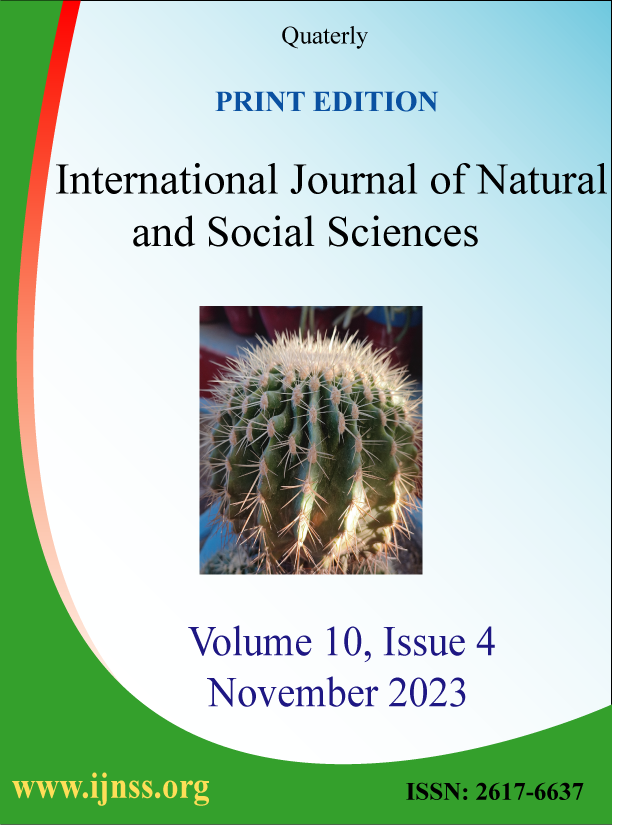Spatial variations in the nutritional profiles of young, spent, ripe or gravid hilsa (Tenualosa ilisha) flesh and eggs
Sheik Md. Moniruzzaman1,![]()
![]() Md. Golam Mortuza1, Nur-Un-Nesa2, M. Salahuddin3, Md. Ariful Alam1, AKM Nowsad Alam4
Md. Golam Mortuza1, Nur-Un-Nesa2, M. Salahuddin3, Md. Ariful Alam1, AKM Nowsad Alam4
1Department of Biochemistry and Molecular Biology, Bangladesh Agricultural University, Mymensingh – 2202, Bangladesh
2Department of Fisheries Biology and Genetics, Bangladesh Agricultural University, Mymensingh – 2202, Bangladesh
3Department of Physiology, Bangladesh Agricultural University, Mymensingh – 2202, Bangladesh
4Department of Fisheries Technology, Bangladesh Agricultural University, Mymensingh – 2202, Bangladesh
ABSTRACT Full Text (HTML) (PDF)
Hilsa (Tenualosa ilisha) being called as ‘Machcher-Raja’ or ‘The King of Fish’ has been designated as national fish of Bangladesh. Hilsa is a popular fatty fish containing health beneficial omega-3 PUFAs and rich in other essential nutrients. It plays a significant role in the food, nutrition, culture, cuisine and economy of Bangladesh. The nutritional composition of fish varies greatly from species to species and within the species, depending on age, feed intake, physical activity, sex and sexual changes connected with spawning, environment or geographical localities and season. The present study was designed with an objective to see the spatial changes in proximate composition of mature female hilsa in different stages of life cycle like without eggs (young or spent) and with eggs (ripe or gravid), flesh and eggs during its anadromous migration from the Bay of Bengal to Meghna river. Marine and riverine hilsa were procured from the coast of Bay of Bengal (Chittagong), Payra river (Patuakhali), Kirtonkhola river (Barisal), and Meghna river (Chandpur) respectively. Moisture, crude protein, crude fat and ash content of hilsa sample were estimated using the oven dry, Kjeldahl and Soxhlet method respectively. The ash content was determined by incinerating the dried samples contained in the crucibles in a muffle furnace at 550-600°C for about 6-8 hrs without pre-ashing. The results showed that in mature/young or spent hilsa flesh the moisture content were 64.74%, 61.12%, 63.80% and 65.58% respectively. The protein values were 17.20%, 19.60%, 16.68%, 17.09% respectively. The fat content followed a gradual decrease with 16.07%, 16.94%, 15.24%, 14.43% values respectively and ash percentage were 1.10%, 1.20%, 2.81%, 2.19% respectively. On the contrary, in ripe or gravid hilsa, the moisture content showed decreasing trend with 67.26%, 67.16%, 64.89% and 62.48% respectively. In contrast to moisture, very high protein and fat values with a gradual increase were estimated and observed as 15.74%, 16.29%, 18.07%, 19.44% and 14.38%, 13.84%, 14.67%, 14.33% respectively and ash percentage were 1.01%, 1.23%, 1.28%, 2.45% respectively. In hilsa eggs, the moisture content declined with upward migration and recorded as 65.97%, 68.01%, 62.71% and 62.56% respectively while protein and fat values increased as 13.56%, 15.09%, 15.56%, 15.62% and 16.83%, 14.77%, 18.16%, 18.23% respectively and ash percentage were 2.67%, 1.26%, 2.55%, 2.67% respectively. The proximate composition of hilsa flesh varied quite widely between spent or young and ripe or gravid hilsa of marine and riverine catches during their anadromous migration. The study also revealed that hilsa eggs are valuable nutritional element with higher protein fat and ash contents. It is thus concluded based on lipid content, both flesh and eggs could be used as decent source to nutrition. These results suggest that the proximate composition of hilsa species varies with the stages of maturity.
Key words: Proximate composition, young/spent hilsa, ripe/gravid hilsa, hilsa flesh and eggs, spatial variation
![]() Corresponding author. Tel.: +8801737507307
Corresponding author. Tel.: +8801737507307
E-mail address: bappa.bau@gmail.com (SM Moniruzzaman)






